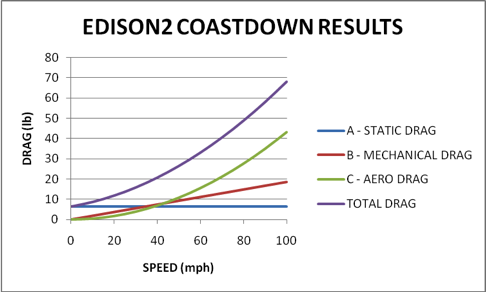What a Difference a Year Makes
In late October 2009, Edison2 set off to Las Vegas for the SEMA Show with the first life-size Very Light Car. The unpainted, windowless and doorless shell was the first trial piece out of our mold and it was mounted on a real but bare frame fitted with dummy suspension. Here’s a photo of that mockup car on the X Prize stand at the show.
Our cars first ran in actual competition at Michigan International Speedway only 26 weeks later. In the meantime, our team had built, assembled and tested the real bodywork, the special engine and transmission, the entire electrical system and our unique patent pending suspension. Not to mention the seats, the handbrake, the steering assembly, the door latches and many, many more parts, assemblies and systems.
Thirteen short weeks after that, Edison2 had survived 3 extremely grueling rounds of X-Prize competition at MIS and successfully completed all the X Prize competition requirements. After holding our breath for what seemed forever, and only 322 days after the Very Light Car mockup appeared at SEMA, Edison2 and the #98 were presented in Washington DC with the X Prize Winner’s trophy.
One year later, Edison2 sets off once again to Nevada but this time with the #98 X-Prize winning car.
We wonder what we’ll find there. Competitions can be ruthless but in the end they are honest. The honesty that emerged was that light weight and low drag really are the only absolute virtues. Another truth is that of many X-Prize contenders in Las Vegas last year, few survived the Finals. And the world’s problems have not gone away in the last 12 months. We all still face difficult times and enormous economic uncertainty and the right path forwards is still emerging. We think we’re part of that path.
At SEMA we will discuss our car and the ideas behind it to any and all interested people. Back in the shop, the rest of us are working just as hard as this time a year ago on the new Version 4 Very Light Car. If this work seems to take a long time, please remember what our group has achieved in the last 12 months and then imagine with what we know now what we can do in the near future. We hope you’ll come along for the ride.
 Edison2,
Edison2,  Events,
Events,  Very Light Car
Very Light Car 



